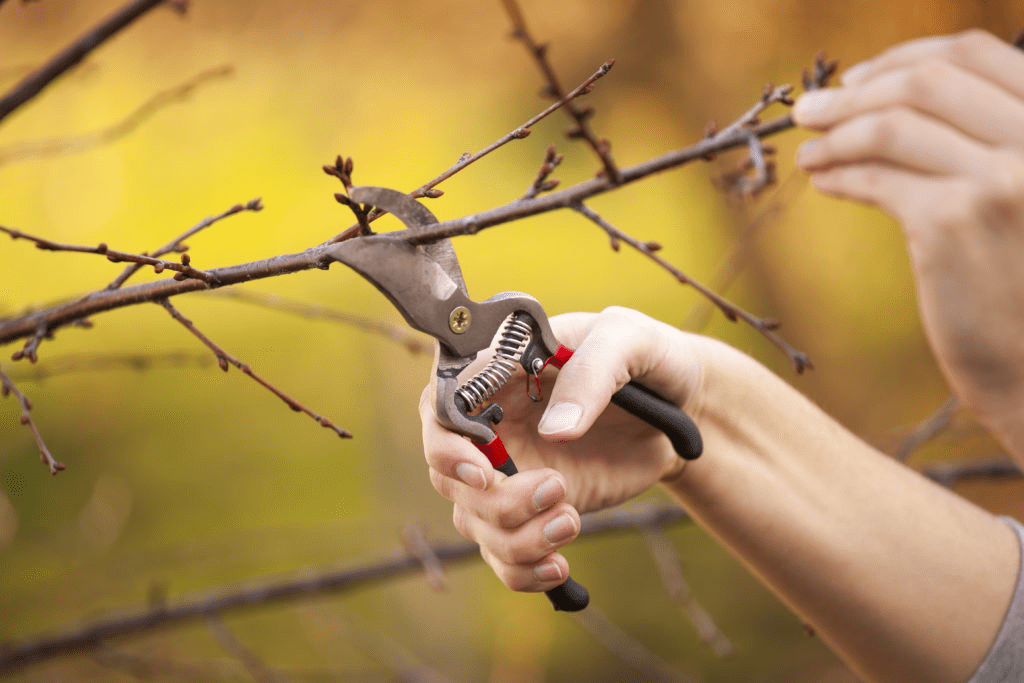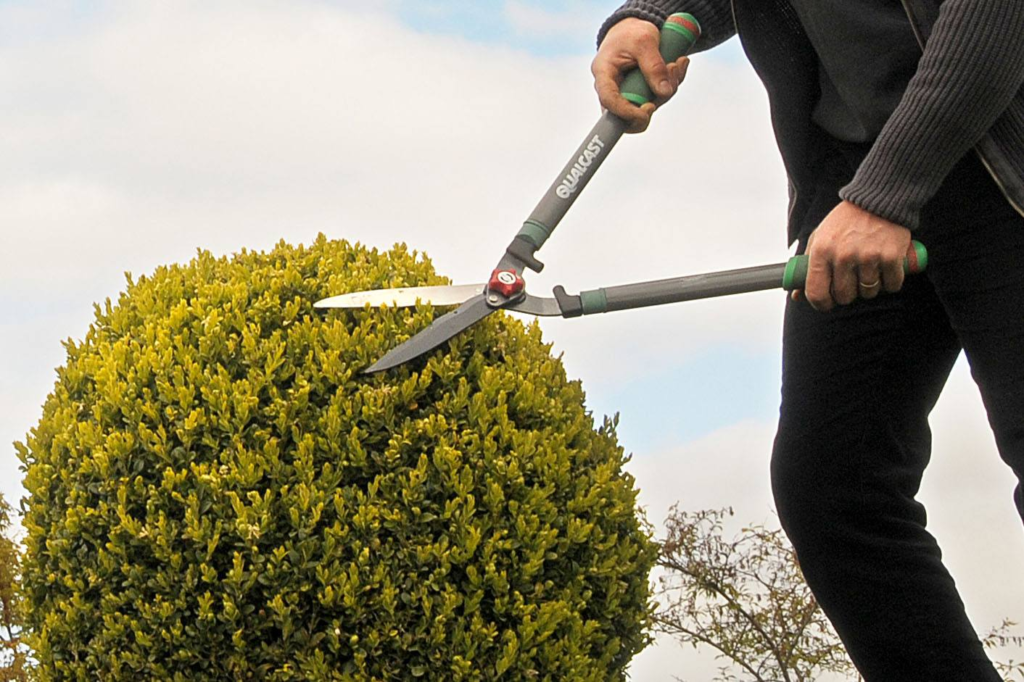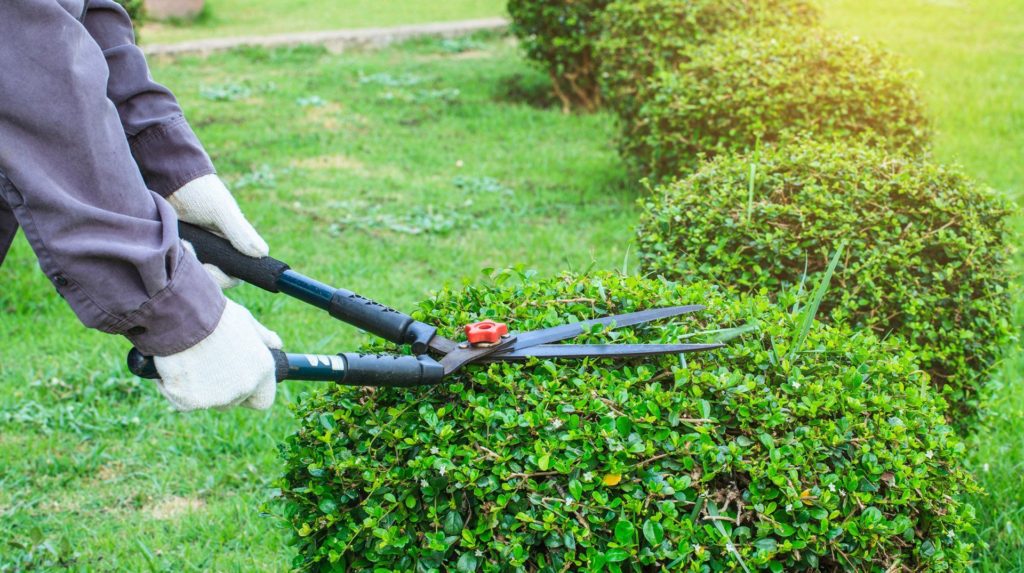Everyone is familiar with the fruit called nectarine. This is a really delicious fruit. But what about nectarine trees? Before you get ripe and delicious fruit, you need to grow a healthy tree that will bring a good harvest.
Then pruning will be the most important factor that will affect this. In this article, we will describe the correct method of pruning nectarine trees.
Read This Before Pruning Your Nectarine Tree
The main factor you should take into account is knowing what hardiness zone you live in. This can help you to know which time of the year is ideal for you to prune the nectarine tree.
Check the picture below.
Find your hardiness zone HERE
Without this knowledge, you’ll not have more fruits or you will have a dead fruit tree.
How much should I prune nectarine tree?
Ideally, if you want to encourage vegetative growth of the tree and have a healthy growth of the tree in common, healthy and rich harvest perform pruning of the tree every year.
When to prune nectarine trees?
You can choose lat trimming trees in winter, early spring (after the ground has begun to thaw, but before your nectarine tree has buds growing on it), or late summer (after a harvest) to prune your nectarine tree.
10 Effective Tips For Pruning Nectarines
Yes, you already know that pruning the tree is an important process. But what about how to do it correctly? This process can be quite difficult if you do not have the relevant knowledge and at the same time, it will not be difficult for you to do a tree pruning if you are well aware of this issue.
So, catch 10 useful tips that can help you to perform pruning of the tree.
1. Don’t hesitate with nectarine tree pruning
Do not hesitate with pruning the tree, because when you just plant your tree and do the pruning of branches decides whether your tree will be strong and healthy and whether it will bring you good nectarines.
Try to think about the future shape of your tree more when pruning. You may be surprised but when doing this step you are pruning a lot of wood.
Plant growth, fruit growth, and fruit size are determined after this procedure is performed.
2. First you have planted the tree, prune this in winter
It will also be great if you perform pruning of the tree in the first winter after planting it. You will need to leave only those few fruiting wood branches that will really bear nectarine fruit.
3. Prune Every Year
Prune the tree every year during the dormant season, also leaving only those branches that really give the harvest. It helps to be sure that next year’s crop will be healthy and rich.
4. Do not be confused about branches
One of the most important tips is to make sure you prune any branches that are coming off of your Fruiting Wood that does not point outwards. If it points inwards, cut it. If it points out horizontally, cut it.
5. Prune Dead Wood
It is necessary to prune diseased branches, discolored, or dead wood (often without leaves and fruits), as well as areas without bark. Also, an early indication of the ill wood is key. Hardened sap on the wood is the first factor of the ill plant. Start pruning it immediately to prevent your whole plant from death.
6. Prune Suckers
Suckers are real evil for your tree, because they grow from the tree root system, while they do not bear fruit and take away nutrients and water. Get rid of them.
7. Prune Secondary Branches
Cut off excess secondary branches (every branch that is growing at less than a 45-degree angle) that do not have harvest but only take valuable nutrients from more important main branches.
8. Prune Fruiting Wood
Sometimes it is necessary to prune the branches that give the harvest too if you want to get a rich harvest. Cut off 1/3 or 1/4 from the main branch.
9. Prune Non-Fruiting Wood
Non-fruiting wood is your real enemy. All new growth and new branches must be pruned as well if there is no harvest on them. To help a plant produce more fruit you should leave only those branches that will give the harvest.
Cut it off and don’t regret it!
10. Don’t Forget About Distance
There should be 10-15 inches between your fruit-bearing branches. There shouldn’t be pointing inwards branches or intertwined with each other branches.
Useful Video: How to Correctly Pruning Nectarine Trees
How to Correctly Pruning Nectarine Trees
Now we can share with you detailed instructions on how to prune nectarine trees correctly.
Pruning fruit trees should not be ignored by you. With this procedure, you help the nectarine tree to be strong, healthy, stress-resistant to cold. Also, this procedure is responsible for healthy growth, what the harvest will be, whether the fruits will be large, what their quality will be.

So, let’s go.
Tools you’ll need
Obviously, before you start to do the following actions we should say that first, you’ll need to prepare some necessary tools.
– Secateurs to prune small branches
– Pruning saw for larger branches
– Chainsaw for larger branches
– Sharpening tools
– Wire
– Chlorine bleach and water
– Lime sulfur
– Latex paint
– A ladder
Learn how to properly clean your pruners in the video below:
How to Clean and Sharpen Pruning Tools
Disinfect your tools
You may be surprised, but disinfection when pruning the nectarine tree is also an important procedure. It turns out that non-disinfected tools can cause the spread of pathogens and bacteria.
In order to properly disinfect your tools, you will need to create a special solution.
Imagine a liquid in a container.
Divide the entire volume of liquid into 10 parts.
One of these parts should consist of chlorine bleach, and the other nine should be water.
Disinfect your instruments with this solution for 30 minutes.
Then you can proceed to the next step.
Cut the trunk
Look at the top of your plant which is growing from the trunk. Visually imagine or measure how much will be 60-75 cm from the beginning of the top of the plant. Cut it off. It also has a beneficial effect on plant growth, fruit growth, the root system, vegetative growth, and nutrients/water circulation.
Trim the bigger branches
So, you have already correctly performed all the actions listed in the step described above, but what to do next?
And then you will have to pick up the pruner again. Use it and get rid of all small or large branches without regret except for the two main branches. These two branches are the tallest ones growing from the trunk of the tree. They are also called scaffold branches. You have to form a V-shape (also seems like Y-shape) with these scaffold branches.
This procedure helps the tree absorb more sunlight.
Secure the highest branches
Now take the wire. You should use the wire to create a Y-shape between the two highest scaffold branches and the trunk. It helps to keep them stable. At the same time, you need to make sure not to overdo it, otherwise, the overstretched wire will prevent the branch growth.
Do not think that after first pruning you do not need to prune your nectarine tree then. You have to prune young trees mandatory for the first three years after planting.
Now you have to look at your Y-shaped scaffold branches and find the trunk’s extension above. Cut it off and do not forget to hold your tool at a 45-degree. This procedure is necessary if you want to distribute nutrients to its lower parts and encourage vegetative growth.
Then you can wait until January. Then you have to cut back on new branch growth. These are lateral branches that grow out of the scaffold branches. Prune these branches growing from scaffold branches to the collar or base at 45 degrees.
Don’t let your tree get sick. You may ask how to determine this. Very easy. The first sign that your tree is starting to get sick is the gumming that appears. They are formed due to the leaking juice. And the juice appears from the damage. Injuries signal illness. Trim the places with gumming.
Cut down the smaller branches
We said above that getting rid of suckers is also an important step on the way to growing a healthy plant. Suckers prevent your nectarine tree from getting all the nutrients and water in full. These small branches grow from the base of the tree but do not have a harvest. You don’t need them, so cut suckers back to the branch collar.
Cut to the branch collar at a 45-degree angle as well.
Actually, you don’t need branches that grow downwards. These branches at first seem to bear fruit, but you will notice that time after time there will be less fruit and the branches will only eat nutrients and water once again, which in turn will not go to the fruit-bearing branches.
You should prune such branches at the point where they tend to grow downwards to encourage horizontal growth and fruit production.
Your plant does not need many small branches that do not have a harvest. In order to determine at the beginning where the fruit will grow and where only the leaves and branches are, pay attention to the buds.
If there are two or three buds in one place, then this indicates that fruits will soon appear in their place, and if you see only one, it will be a leaf or branch that is being born. If you find one bud, cut off the branch heading slightly higher from this bud.
Protect your nectarine tree
You know that despite all the good sides of pruning a tree, this procedure causes a lot of stress to the plant. To protect it from insects and disease, lubricate the trunk with latex paint.
Final words
Fruit-strewn trees are the dream of every gardener. It is possible to realize it only under the condition of competent and full-fledged care of plantings. Competent pruning of trees is especially important, without which their normal growth and development are impossible. In this case, there is also no need to wait for a plentiful harvest.
Now you know all the details concerning this problem and are also familiar with the detailed instructions on how to prune your nectarine tree.
We hope we helped you. We wish you good harvests!










































